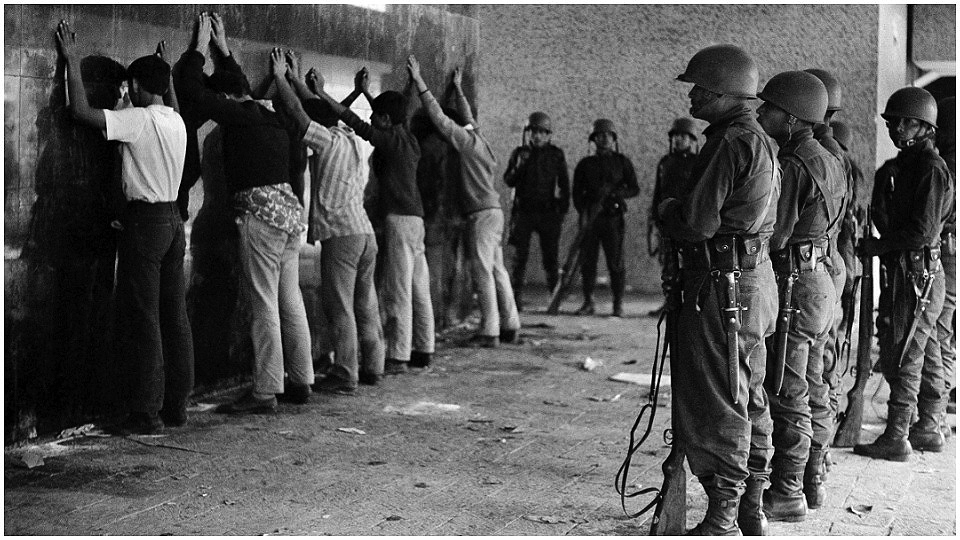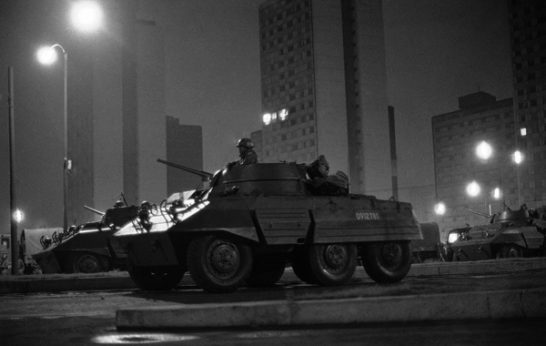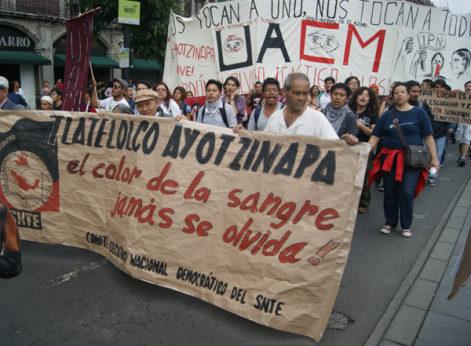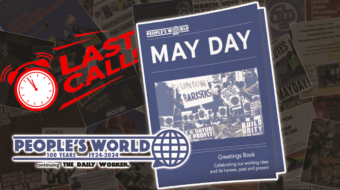
Fifty years ago, on October 2, 1968, a horrific massacre of students and protesters took place at the Plaza de las Tres Culturas (Three Cultures Square) in the Tlatelolco housing complex in Mexico City. To this day many mysteries surround this event, but some clarity has emerged over the years.
The year 1968 was a tumultuous one worldwide, and no less so in Mexico. The 1968 Olympics were scheduled to take place in Mexico later in October, and tension in the country was rising. Several U.S. agencies, including the FBI and CIA, warned of possible disturbances at the Olympic Games. An August 27 student protest in Mexico City’s central Zócalo plaza was among the largest anti-government actions in the nation’s history.
Students were agitated over the government’s intrusion onto school and university campuses, which had always enjoyed autonomy and sanctuary status. In one recent incident, the army had used a bazooka to blast into the National Preparatory School in San Ildefonso, killing several students. President Gustavo Díaz Ordaz clearly stated: “No more unrest will be tolerated.”
The students formed a National Strike Council (Consejo Nacional de Huelga), with equal representation by female students. This democratic delegation of students from 70 universities and preparatory schools in the country coordinated protests to promote social, educational, and political reforms, including removal of police from their campuses.
After a series of other campus incursions, and protests in response, the student movement called for a gathering in Tlatelolco on Oct. 2. An estimated 10,000 turned out, hoping to find direction for their next moves. Among their chants were ¡No queremos Olimpíadas, queremos revolución! (“We don’t want Olympics, we want revolution!”).

As the meeting was winding down, 5000 soldiers, 200 tanks and trucks surrounded the plaza to arrest the leaders, while helicopters circled overhead. Gunshots rang out from buildings around the plaza. The troops then opened fire on the gathering, in a shooting bloodbath lasting almost two hours. Soldiers also fired into nearby buildings, hitting not only the protesters, but also bystanders and passersby, including children. Journalists (one of whom was Italian reporter Oriana Fallaci) were hit by bullets, and mounds of bodies soon lay on the ground. As demonstrators fled from the scene, tanks moved in and bulldozed everything and everyone in their way on the plaza.
According to the official account, the students had fired first, and the soldiers fired back in self-defense.
The numbers of people killed, wounded and detained are still in dispute. The government originally reported four dead; then the number rose to 26, with 100 wounded and over 1000 arrested.
But eyewitness accounts described hundreds of students’ bodies piled into trucks and carted away. Thousands of protesters were beaten, jailed and “disappeared.” Some people said there may have been as many as 3000 casualties.
The government-controlled media reported the officially sanctioned account. El Día‘s morning headline the next day, read, “Criminal Provocation at the Tlatelolco Meeting Causes Terrible Bloodshed.”
Only about 40 dead have been documented with certainty, and these are now memorialized on a stele in the current-day Tlatelolco plaza.
While it is still impossible to ascertain the exact toll, U.S. and Mexican government documents released years later offer clues as to what might have happened. According to historians now, the government placed snipers, members of the Presidential Guard, in the surrounding buildings to fire the first shots, giving the army the excuse to fire on the amassed crowd. The government secretly videoed the massacre, but that footage was released only 20 years later as the investigation into the massacre continued.
Students said that the helicopters appeared to signal the army to fire into the crowd. Journalist Elena Poniatowska culled interviews from those present and described the events in her book Massacre in Mexico: “Flares suddenly appeared in the sky overhead and everyone automatically looked up. The first shots were heard then. The crowd panicked…[and] started running in all directions.”

In October 2003, based on Freedom of Information Act requests, the role of the U.S. government in the massacre was revealed in released records from the CIA, the Pentagon, the State Department, the FBI and the White House (in Lyndon Johnson’s last remaining months in office). The documents detail that in response to Mexican government concerns over the security of the Olympic Games, the Pentagon sent military radios, weapons, ammunition and riot control training material to Mexico before and during the crisis.
Also, that the CIA station in Mexico City produced almost daily reports concerning developments within the university community and the Mexican government from July to October. Six days before the massacre at Tlatelolco, Luis Echeverría, a later president of Mexico who at the time served as Interior Secretary under President Díaz Ordaz, told the CIA that “the situation will be under complete control very shortly.” (In 2006, he was indicted and ordered under house arrest for his role in the massacre, but in 2009 the charges against him were dismissed and he regained freedom.)
The released documents also indicate that the Díaz Ordaz government “arranged” to have one of the student leaders accuse dissident politicians from his own party of funding and orchestrating the student movement in order to smear them.
An hour-long documentary about Tlatelolco in Spanish can be found here.
Sources: National Public Radio, Wikipedia.

MOST POPULAR TODAY

High Court essentially bans demonstrations, freedom of assembly in Deep South

UN warns that Israel is still blocking humanitarian aid to Gaza

Resource wars rage in eastern Congo, but U.S. capitalism only sees investment opportunity

U.S. imperialism’s ‘ironclad’ support for Israel increases fascist danger at home







Comments